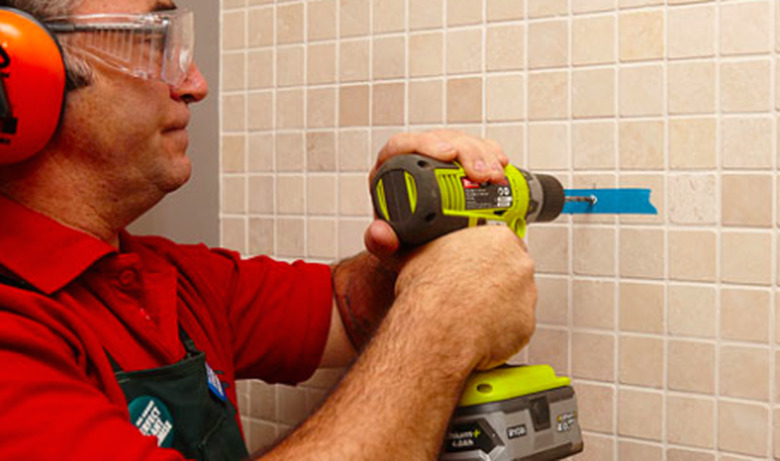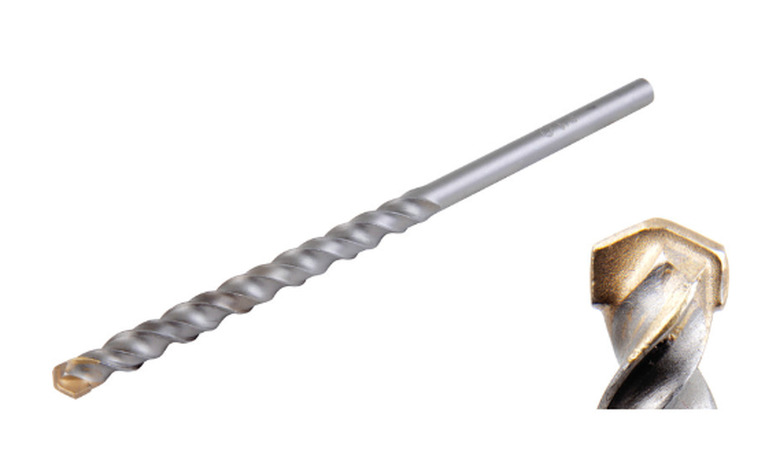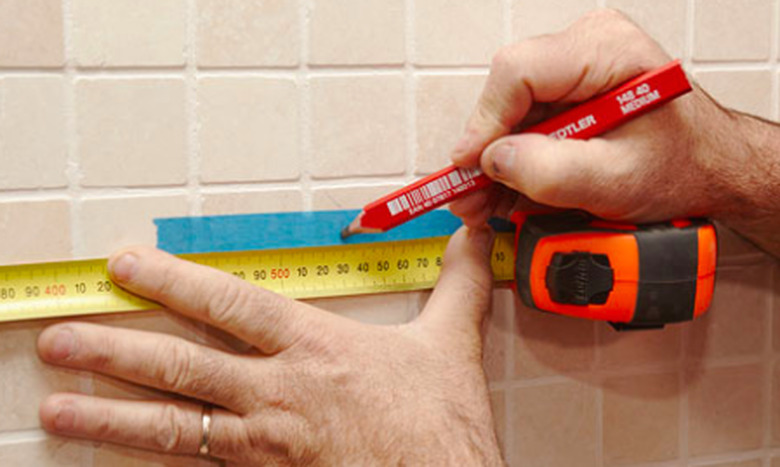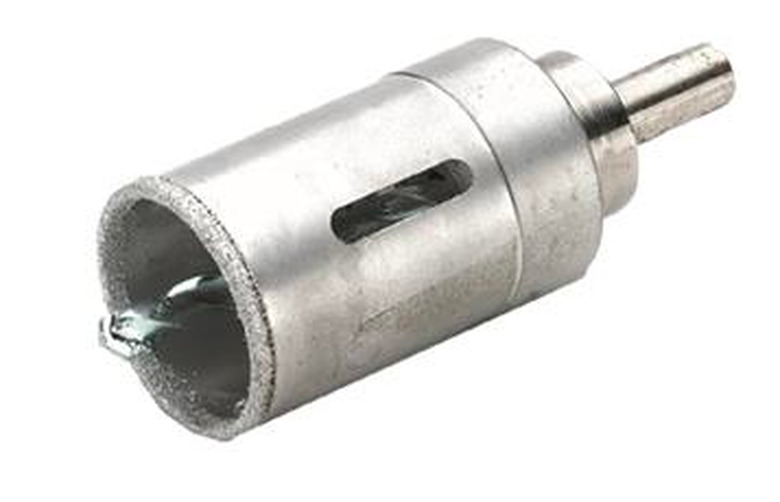How To Drill Through Ceramic Tile
When you're installing a towel rack in the bathroom or a spice rack in the kitchen, the most reliable way to secure it to the wall is to drill pilot holes through the wall and install conical anchors for the screws. It's a straightforward process, but a bit more laborious if the walls are tiled. You need a special masonry drill bit to do it, and because the point isn't sharp and the tile is so hard, the bit can wander when you start drilling. There's an easy way to prevent this, and once the bit has formed a depression, you're in the clear. After that, the drilling procedure requires patience more than anything else. You don't want to hurry things, or you'll end up with an overheated and deformed bit, or worse, a cracked tile.
If you need to make a hole that is larger than about 3/4 inches in diameter, you have a couple of options. You can use a ceramic tile hole saw, which makes a very clean hole, or you can drill small holes around the perimeter of the larger hole and tap out the center or cut it out with a jigsaw.
Choose Your Bit
Choose Your Bit
You can buy specialty bits for drilling through ceramic, but a regular masonry bit will also do the job. Unlike a wood bit, a masonry bit has a triangular head that comes to point, but not a sharp one. It's made from high-speed steel, which is more heat resistant than the high carbon steel used in most wood-drilling bits. Bit sizes are clearly marked, so you usually don't have to measure the diameter, but if you do, keep in mind that the head, not the shank, determines the size of the hole the bit will drill, This is another difference between masonry and wood bits. When installing a conical screw anchor, the head width of the bit should correspond to the width of the anchor just below its outer flange.
If you need to drill a hole larger than about 3/4 inches, you should purchase a hole saw with the diameter you need. Hole saws for masonry and tile looksjust like wood-cutting hole saws, but instead of conventional teeth, they have an abrasive edge. You can drill large holes without a hole saw, but using one makes the job easier and cleaner. Ceramic hole saws are available with diameters as large as 4 1/8 inches.
How to Drill Small Holes in Ceramic Tile
How to Drill Small Holes in Ceramic Tile
Things Needed
-
Masking tape
-
Masonry drill bit
-
Variable-speed drill
-
Bowl with water
You'll need a variable-speed drill to do a good job when drilling in tile, so put away your antique plug-in model. If the drill has a speed control, set it about halfway. If the trigger has an automatic speed control, hold it down about halfway when drilling. Keeping this in mind, the following procedure will give great results:
- Lay masking tape on the tile at the approximate location of the hole you want to drill. After laying the tape, accurately measure the hole location and mark it on the tape with a pencil.
- Fill a small bowl with water and keep it next to you while you're drilling. Periodically dip the tip of the bit in the water to cool it off and prevent it from overheating.
- Set the tip of the bit on the tape and press down with moderate force to keep the bit in one place while it's biting into the tile.
- Run the drill at about half speed and apply moderate pressure. Don't be tempted to press hard, or you could crack the tile. It may take a little longer for the bit to do its job, but you're sure to get clean results.
- Stop drilling as soon as the bit breaks through the tile. There may be pipes or wires behind the wall, and you don't want to drill into them.
How to Drill Larger Holes in Tile
When you're installing plumbing pipes in tile floors, you may need to drill a 2- or 3-inch-diameter hole, and a ceramic tile hole saw is the tool for that. It comes with a pilot bit that can wander over the tile surface, so don't forget to lay tape before marking the position of the hole and drilling. Because it's drilling a larger area, there is even more potential for a hole saw to overheat, so it's even more important to keep a small container of water nearby and to dip it periodically.
Ceramic tile holes saws are expensive, and the one you need might cost anywhere from $50 to $100. This is a lot to pay for a tool you'll use only occasionally—or maybe even just once. An alternative way to cut a large hole is to draw an outline of the hole on tape-covered tile and drill a series of small holes around the outline with a masonry bit. Space the holes about 1/2 inch apart, and when you've drilled all of them, tap out the center of the hole with a hammer. The edge of a hole you cut this way will be ragged, but that might not matter if it's underneath a cabinet or otherwise hidden.
If you need a smooth edge, you can use a jigsaw with a ceramic-cutting bit to cut out the hole. This method still requires you to pre-drill small holes around the outline of the shape you want to cut out, but you don't need as many. In fact, you really need only one to allow the blade to pass through the tile. Drilling more makes the job of cutting the hole with the jigsaw easier, though. As with drilling tile, cutting with a jigsaw and ceramic-cutting blade requires a slow blade speed to avoid overheating. Ceramic-cutting blades are covered with carbide grit along the cutting edge, and cutting too fast—or applying too much feed pressure—can overheat the blade and ruin the cutting edge.



